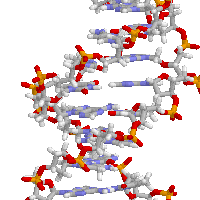
The Effects of Radiation on DNA
The objective of our research is the understanding of the mechanism involved in DNA damage by ionizing radiation under conditions of direct damage using a combined approach of spectroscopy and stand-breaks analysis. We use two classes of drugs: (1) compounds that will protect DNA from radiation damage; and (2) drugs that will sensitize DNA to such damage, which might prove useful in cancer therapy.
The radiation damage to DNA proceeds via two fundamental mechanisms. In one, damage is primarily indirect since dilute aqueous solutions are studied at ambient temperatures. Under these conditions damage is largely done to water molecules, and the major attack on DNA occurs by hydrogen atoms, hydroxyl radicals, and solvated electrons at various sites. The most significant reaction of hydroxyl radicals is hydrogen abstraction from deoxyribose moiety leading to chain breaking.
In the other mechanism, damage is direct in which primary electron loss and electron gain captures occur within the DNA molecule. In this model, aqueous solutions of DNA are cooled to 77 K and irradiated. The hydroxyl radicals formed within the ice crystals will form hydrogen peroxide at ca. 130 K, and thus will not damage the DNA. It has been argued that the direct mechanism plays a more significant contribution to the in vivo damage that the indirect mechanism. In our studies, we pursue the direct mechanism and determine the extent of damage in terms of single- and double-strand breaks.
 |